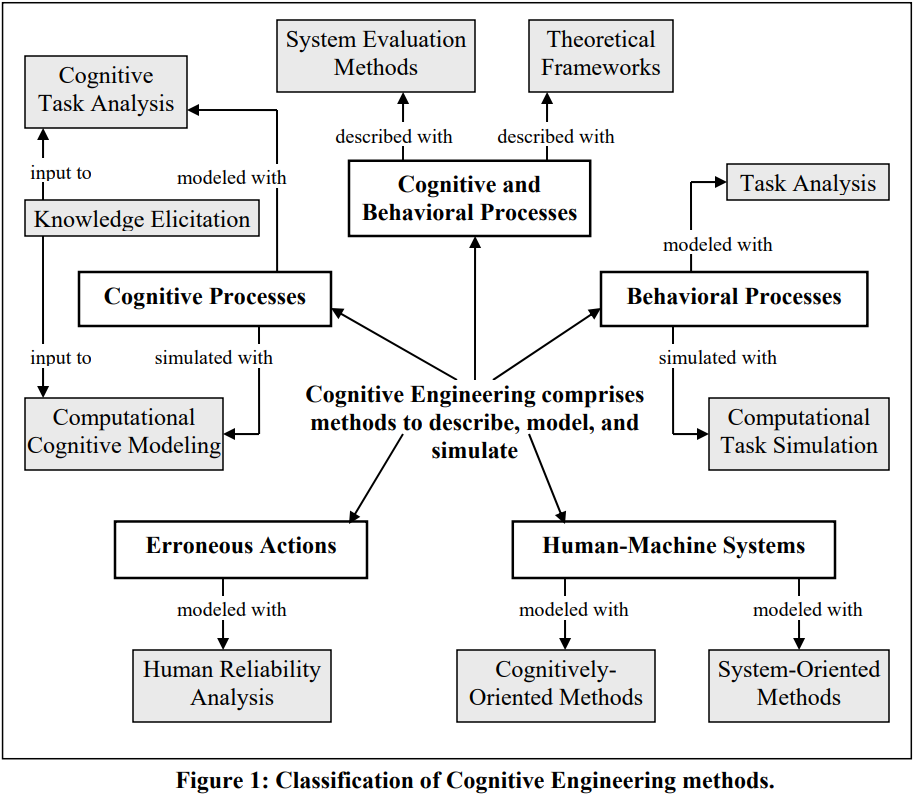SystemsEngineering에 CognitiveEngineering을 어떻게 적용할지에 대한 내용을 담고 있다. (왜 System Engineering이 아니라 Systems Engineering일까? 한국에서는 '시스템 엔지리어링'이라고 표기하고, 그래서 영문으로 다시 표기할 때도 System Engineering이라고 부른다. 'Systems'라는 뉘앙스를 놓친 것.) CognitiveSystemsEngineering 이라고도 할 수 있겠음.
Human-System Integration의 문제.
사람을 시스템에서 제거하려 하지만, 시스템은 사람이 구동함. 사람은 창의성, 전문성, 적응성이 있기 때문에 엔터프라이즈에서 핵심적인 요소가 되기 마련임. 결국 사람과 시스템이 어떻게 잘 조화되느냐, 사람이 시스템을 사용하기 용이하게 설계하느냐가 중요함.
CognitiveEngineering은 BehavioralTaskAnalysis와 CognitiveTaskAnalysis 모두가 연관되는데, 후자를 더 고려(concern)함.
CognitiveTaskAnalysis moves beyond observable behavior to measure and model the mental activities (cognition) that drive observable behaviors, and it can be used to assess quantities like throughput as well as quality. For example, CognitiveTaskAnalysis can be used to assess the potential for human errors in information processing, and thereby serve as a basis for designing decision support systems.
CognitiveTaskAnalysis가 꼭 전문성에만 연관된 것이 아니라, 좀 더 넓게는, 정신(mental) 영역에서 어떤 일이 일어나는지를 파악하는 것.
